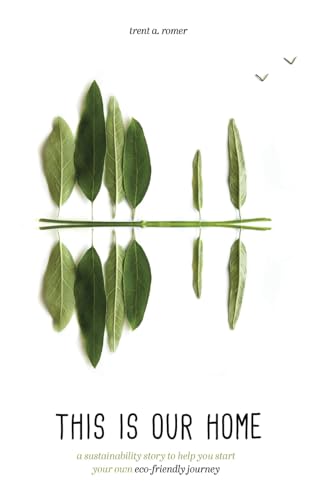When the snow starts falling you can’t help but feel the excitement of sledding down a fresh hill. It’s one of winter’s purest joys and a great way to enjoy the outdoors. But have you ever thought about how your sledding habits might impact the environment?

You don’t have to trade fun for sustainability. With a few mindful choices you can keep your sledding adventures green and guilt-free. Whether you’re heading out with friends or planning a family day, you’ll find it’s easy to make eco-friendly choices that protect the winter wonderland you love.
What Is Eco-Friendly Sledding?
Eco-friendly sledding lets you enjoy every glide while reducing your impact on the snow-covered environment. You’ll choose sleds built from recycled or sustainably sourced materials instead of plastic or metal versions that don’t break down naturally. You’ll ride downhill in marked sledding areas or open spaces free from protected plants and wildlife habitats.
Every trip means packing out anything you bring in, from snacks to gear pieces, so you leave the spot as clean as you found it. You’ll use wax-free or plant-based waxes to prep your sled runners if you want more speed, avoiding those with petroleum ingredients that can contaminate snowmelt. You’ll dress in reusable or recycled outdoor layers, skipping fast fashion to reduce microfiber shed and waste.
You’ll encourage your sledding friends and family to follow green practices too, from sharing rides to the hill to only exploring legal sledding zones. Eco-friendly sledding keeps the adventure pure so snowy landscapes remain for future winter sports enthusiasts.
Choosing the Right Sled for the Environment
Picking an eco-friendly sled keeps your winter playground clean and lets you enjoy snow sports with a lighter footprint. Your material choice and sled design have a direct impact on local habitats and future outdoor fun.
Sustainable Materials to Look For
Focus on sleds made from recycled plastic, FSC-certified wood, or metal with recycled content. Recycled plastic models, like the Zipfy Classic, reduce new plastic production and often last several seasons. FSC-certified wooden sleds use responsibly managed timber, minimizing deforestation and environmental disruption. Metal options with high recycled content, usually labeled by the manufacturer, combine durability with a lower ecological impact.
Sled Alternatives to Avoid
Skip single-use sleds, especially those made from thin, unrecyclable plastic or disposable foam. Foam sleds, such as cheap “snow saucers,” break apart quickly, leaving microplastics in natural areas. Stay away from DIY sled options built from cardboard or materials not designed for winter sports—these wear out fast and create litter that’s difficult to recover from snowy hills.
Preparing for a Green Sledding Day
Prepping for sledding gives you a chance to support both winter fun and eco-friendly practices. Packing thoughtfully and dressing wisely keeps your day both green and enjoyable.
Packing Eco-Friendly Supplies
Packing eco-friendly sledding gear cuts down on waste and preserves the beauty of winter landscapes. Bring reusable water bottles, insulated thermoses, and snacks in beeswax wraps or silicone pouches. Skip single-use plastics like individually wrapped snacks, chip bags, or disposable cups. Choose a canvas bag or recycled backpack to carry your essentials. Pack out everything you bring, including food scraps and biodegradable items, to protect local habitats.
Dressing Sustainably for the Outdoors
Dressing sustainably for sledding means layering smart with durable, responsible choices. Wear activewear made from recycled polyester, organic cotton, or wool blends. Pick outer shells and gloves from brands with third-party certifications like Bluesign or GRS. Select secondhand or upcycled pieces for extra sustainability. Avoid clothing with chemical-based waterproofing if plant-based finishes are available. Bring reusable heat packs and natural fiber hats instead of single-use warmers or synthetic beanies.
Minimizing Environmental Impact While Sledding
Eco-friendly sledding keeps snowy days fun for you and safe for the outdoors you love. As a fellow winter sports enthusiast, you know pristine trails and clean hills keep the magic alive year after year.
Respecting Natural Landscapes
Safeguard the snowfields and wildlife while you sled. Stick to marked or established sledding hills—for example, local parks or ski resorts—so you don’t trample vegetation or disturb animal habitats. Avoid breaking new trails in untouched areas, since many plants and small creatures hide under the winter cover. If you see boundary signs, stay outside these zones, because many sites use these to protect fragile ecosystems. Step carefully when hiking uphill, placing your boots or snowshoes where others already walked, to limit lasting impact. If there’s a thaw, skip sledding on muddy or exposed ground as this causes serious erosion and disturbs plants.
Proper Trash and Waste Management
Pack out everything you bring to sledding spots. Collect snack wrappers, empty drink bottles, tow ropes, lost mittens, and used heat packs in your gear bag or backpack; mountaintop winds often scatter forgotten items, so double-check your area before heading out. Use reusable containers—examples: stainless steel bottles, silicone baggies—to shrink your waste output for every trip. If your sled breaks, carry it home rather than ditching it; many repair shops or city service centers recycle broken sleds or parts. Spot a leftover item from a previous visitor? Grab it and toss it in your pack, since each action helps keep hillsides free from pollution. Always follow official site policies on waste management, because some locations have zero-waste mandates or designated drop sites.
Supporting Local and Sustainable Sledding Spots
Back country and community-run sledding hills help preserve winter terrain while supporting your local economy. When you sled at these designated sites, you boost organizations committed to safe, eco-friendly recreation. Some local hills, such as city parks or nonprofit-operated areas, enforce sustainability rules—like native vegetation protection, erosion controls, or wildlife boundary signs.
Choosing sustainable spots also keeps fragile habitats safe. Municipal sledding parks usually maintain set paths, reducing risk to plant roots and soil. Parks that use natural snow rather than artificial snow lessen water and energy use. If you visit a popular hill, check if it follows Leave No Trace guidelines or offers educational signage about local ecosystems.
Partnering with regional stewardship programs increases your positive impact. Volunteer community events—like hill cleanups or native tree plantings—usually post schedules online through the town recreation board or green initiatives group. By joining these efforts, you help restore natural beauty while building connections with other eco-minded sledding enthusiasts.
Shopping at nearby gear shops or cafes further supports winter sports infrastructure and jobs in your area. Neighborhood businesses often source locally, reducing transportation emissions compared to national chains. You can ask staff for tips about sledding spots that balance adventure with conservation, giving you more ways to sled sustainably all season.
Spreading the Word About Eco-Friendly Sledding
Sharing eco-friendly sledding tips with others amplifies your positive impact on the snow and trails. Encourage friends and family to choose recycled-material sleds by sharing your experiences with your favorite sustainable gear. Explain how FSC-certified wooden sleds and recycled metal designs perform on hills, using examples from local runs or events.
Show others how easy it is to pack food and drinks sustainably by demonstrating your reusable bottles, beeswax wraps, and silicone snack bags during group outings. Offer quick pointers on how you keep waste to a minimum at every gathering.
Document green sledding days with photos and updates across social media platforms. Highlight sustainable gear choices, respectful hill use, and waste collection efforts at your favorite local spots. Tag local stores and conservation groups to give visibility to community businesses and stewardship projects.
Invite others to join clean-up days or stewardship activities before or after sledding adventures. Mention how you learned about site-specific rules and why following them helps preserve winter habitats. Organize small group events where everyone agrees to leave sledding hills cleaner than they found them.
Offer to lead beginner-friendly eco-friendly sledding outings for your network. Explain gear options, safe sledding etiquette, and easy green habits like packing reusable thermoses. Give examples from your own trips where small changes made snowy afternoons safer and cleaner.
Recommend local eco-conscious businesses you trust. Share stories of buying well-made recycled sleds or grabbing post-sledding snacks from sustainable cafes. Connect others to regional organizations and events focused on low-impact winter fun.
Each time you sled, your green habits and enthusiasm motivate others to protect the snow you love. Spread your passion—every share, invite, and tip keeps the winter playground thriving.
Conclusion
Eco-friendly sledding isn’t just about protecting nature—it’s about creating lasting memories while making a positive difference. With every small step you take toward greener choices you’re helping keep winter magic alive for everyone.
Let your love for sledding inspire others to join in and make sustainable fun the new tradition. When you choose to sled with the planet in mind you’re not only enjoying the snow—you’re helping to keep it beautiful for years to come.
















